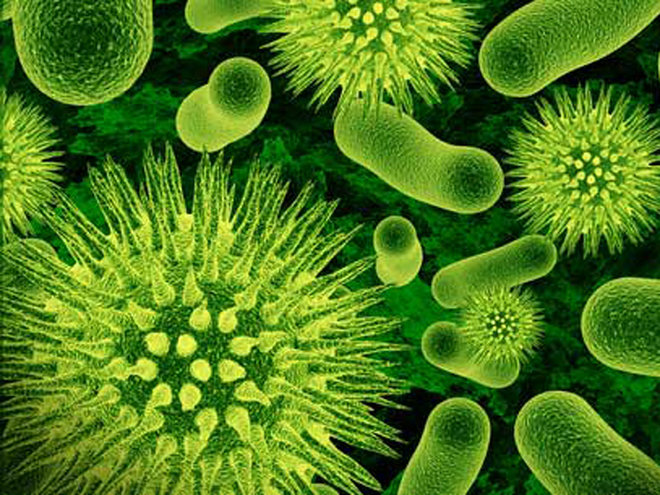27Sep2017
Anti-bacterial, free radical scavenging activity
by admin, 0 Comments

Anti-bacterial, free radical scavenging activity and cytotoxicity of acetone extracts of Grewia flava.
Stella Makgabo Lamol, Jean Paul Dzoyem, Francien Botha, Candice van Wyk
1. Phytomedicine Programme, Department of Paraclinical Sciences, Faculty of Veterinary Science, University of
Pretoria, Private Bag X04, Onderstepoort 0110, Pretoria, South Africa.
2. Department of Biochemistry, Faculty of Science, University of Dschang, P.O. Box 67, Dschang, Cameroon
3. Department of Community Dentistry, Faculty ofHealth Sciences, University of Pretoria, Pretoria, P. O. Box
1266, Pretoria 0001, South Africa
Abstract
Background:Bacterial infections of the gastrointestinal tract (GIT) cause vomiting, diarrhoea and even systemic disease. There
is a need for the development of natural products into alternative and safer medicines.
Objectives: This study evaluated the anti-microbial activity of extracts prepared from berries, leaves,bark and roots of the edible plant Grewia flava.
Methods: The anti-bacterial activity was evaluated by the broth microdilution method. Anti-oxidant activity of the most active extracts was performed by 2, 2-diphenyl-1-picrylhydrazyl (DPPH) assay. The cytotoxicity of the extracts was determined using the 3-(4,5-dimethylthiazol-2-yl)-2,5-diphenyltetrazolium bromide (MTT) assay.
Results: The acetone extracts of the leaves and roots showed the best activity with MIC values as low as 0.03 mg/mL against Staphylococcus aureus and Salmonella typhimuriumand 0.07 mg/mL against Bacillus cereus, Escherichia coli and Staphylococcus aureus.
Quantitative analysis of the scavenging ability showed that acetone extracts exhibited good free radical scavenging activity in a
dose-dependent manner. The berries extract had the highest LC 50 (lowest toxicity) of 551.68 68 µg/mL.
Conclusion: Acetone extract of leaves and roots of Grewia flavacontain anti-microbial and anti-oxidant compounds and could therefore be used as a natural product with little toxicity to host cells.
Keywords: Extracts, anti-microbial, cytotoxicity, enteric pathogens, Grewia flava.
Recent Posts
- Editor’s choice: Tackling infectious diseases, NCDs and sexual reproductivehealth issues as we enter our 24th year of remarkable growth
- Preconception and contraceptive care for women living with HIV/AIDSattending antiretroviral treatment clinics in Lagos State, Nigeria
- Effects of SNPs on TNF-α and IL-10 cytokine expression in TB and HIVpatients in the Capricorn district, Limpopo Province, South Africa
- Prevalence of Schistosomiasis in a neglected community, South western Nigeria at two points in time, spaced three years apart
- Review of Leishmaniasis in the Middle East and North Africa
Recent Comments
Categories
- 2001 Issues
- 2002 Issues
- 2003 Issues
- 2004 Issues
- 2005 Issues
- 2006 Issues
- 2007 Issues
- 2008 Issues
- 2009 Issues
- 2010 Issues
- 2011 Issues
- 2012 Issues
- 2013 Issues
- 2014 Issues
- 2015 Issues
- 2016 Issues
- 2017 Issues
- 2018 Issues
- 2019 Issues
- 2024 Issues
- Articles
- December issue
- December Release
- June Issue
- June Release
- March Issue
- March Issue
- March Release
- News
- number / volume 2
- number /volume 1
- number /volume 1
- number /volume 1 2008
- number 1
- number 1
- number 1
- number 1
- number 1
- number 1
- number 1
- number 2
- number 2
- number 2
- number 2
- number 2
- number 2
- number 2
- number 2 special Issue
- number 2 special Issue 2
- number 3
- number 3
- number 3
- number 3
- number 3
- number 3
- number 3
- number 4
- number 4
- number 4
- number 4
- number 4
- number 4
- number/ volume 3 2008
- number/ volume 4 2008
- number/volume 1
- number/volume 1
- number/volume 2
- number/volume 2
- number/volume 2 2008
- number/volume 3
- number/volume 3
- number/volume 3
- number/volume 4
- number/volume1
- September Issue
- September Release
- Special Edition
- special Issue
- Uncategorized
- Vol. 24 No. 1 (2024)
- volume 1
- volume 1
- volume 1
- volume 2
- volume 2
- volume 2
- volume 2
- volume 2
- volume 3
- volume 3
- volume 3
- volume 3
- volume 4
- volume 4
- volume 4
- volume 4
- volume1
Categories
- 2001 Issues
- 2002 Issues
- 2003 Issues
- 2004 Issues
- 2005 Issues
- 2006 Issues
- 2007 Issues
- 2008 Issues
- 2009 Issues
- 2010 Issues
- 2011 Issues
- 2012 Issues
- 2013 Issues
- 2014 Issues
- 2015 Issues
- 2016 Issues
- 2017 Issues
- 2018 Issues
- 2019 Issues
- 2024 Issues
- Articles
- December issue
- December Release
- June Issue
- June Release
- March Issue
- March Issue
- March Release
- News
- number / volume 2
- number /volume 1
- number /volume 1
- number /volume 1 2008
- number 1
- number 1
- number 1
- number 1
- number 1
- number 1
- number 1
- number 2
- number 2
- number 2
- number 2
- number 2
- number 2
- number 2
- number 2 special Issue
- number 2 special Issue 2
- number 3
- number 3
- number 3
- number 3
- number 3
- number 3
- number 3
- number 4
- number 4
- number 4
- number 4
- number 4
- number 4
- number/ volume 3 2008
- number/ volume 4 2008
- number/volume 1
- number/volume 1
- number/volume 2
- number/volume 2
- number/volume 2 2008
- number/volume 3
- number/volume 3
- number/volume 3
- number/volume 4
- number/volume1
- September Issue
- September Release
- Special Edition
- special Issue
- Uncategorized
- Vol. 24 No. 1 (2024)
- volume 1
- volume 1
- volume 1
- volume 2
- volume 2
- volume 2
- volume 2
- volume 2
- volume 3
- volume 3
- volume 3
- volume 3
- volume 4
- volume 4
- volume 4
- volume 4
- volume1
